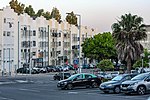The Instituto Gulbenkian de Ciência (IGC) is an international centre for biological and biomedical research and graduate training based in Oeiras, Portugal. Founded by the Calouste Gulbenkian Foundation (FCG) in 1961, and still supported by the Foundation, the IGC is organised in small independent research groups that work in an environment designed to encourage interactions with minimal hierarchical structure.
The scientific programme covers a wide range of domains and is at the interface of different disciplines. These include cell and developmental biology, evolutionary biology, immunology and host-pathogen interaction, plant biology, sociobiology, computational biology and biophysics.All resources are at the disposal of all IGC scientists equally, and common services and equipment are also open to external users.The IGC hosts a number of graduate education and training programmes. Since 1993 the IGC runs innovative PhD programmes, directed towards intellectual breadth, creativity and independent scientific thought. Also, the IGC has a strong tradition in promoting science in society with dedicated outreach programmes.
Around 400 people, including 300 researchers (students, postdocs, technicians and group leaders), from 41 different countries work at the IGC. Since 1998, 88 research groups have already settled in the institute. Of these, 44 went to other institutions, mainly other research centres and universities in Portugal.
In 1998, under the Directorship of António Coutinho, the IGC was restructured into the current set-up and mode of action. Jonathan Howard succeeded Coutinho as Director of the IGC from October 2012 until January 2018. Since 1 February 2018, Mónica Bettencourt-Dias is the Director of the Instituto Gulbenkian de Ciência.






